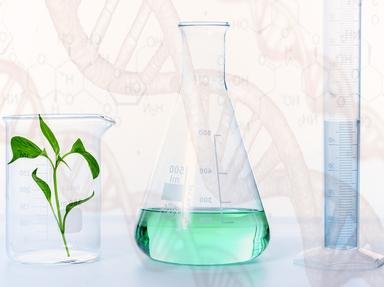Quiz Answer Key and Fun Facts
1. Interviewer: For us to accept you we need to know that you actually know something about chemistry! We'll start with an easy one - can you give me an example of free radical substitution?
Doublemm (thinking): Easy!?
Can you suggest a suitable example for Doublemm to give?
2. Interviewer: Like all students, I'm sure you don't plan on drinking. However, we do require you to know about alcohol. If I were to synthesise ethanol by reacting ethene with steam at 60 atm and 300 degrees Celsius, would the product usually be used in alcoholic drinks?
Doublemm (thinking): Hmm, I wouldn't mind a pint after this.
Can you provide Doublemm with the correct answer?
3. Interviewer: Now onto physical chemistry. You can calculate the enthalpy change of a reaction (Q) by using the equation, Q = m x c x T, where "m" is the mass of the reactant and "T" is the change in temperature during the reaction. What does "c" stand for?
What should Doublemm answer?
4. Interviewer: In chemistry there are always exceptions to "the rule". Can you tell me which one of these four examples is NOT one of these exceptions?
What answer should Doublemm give?
5. Interviewer: Let's turn up the heat and move to group 7 of the periodic table - the halogens. What can you tell me about the melting point as we go down this group?
Which answer should Doublemm give?
6. Interviewer: In chemistry you need to show logical thinking as well as knowledge. This means being able to make links between two things. Can you give me a link between a nucleophile and a base?
Doublemm (thinking): How do I trick them into thinking I am knowledgeable and logical?
What link should Doublemm identify?
7. Interviewer: Some things are essential to chemical reactions, these are catalysts. Can you tell me what catalyst is commonly used during the hydration of alkenes?
What answer should Doublemm give?
8. Interviewer: You may have studied benzene in the past and so may know that it is relatively nonreactive. When a hydroxyl group joins to benzene it causes certain parts of the benzene ring to become more electron-dense. Which parts of the ring are these?
Doublemm (thinking): You lost me at benzene.
Please help Doublemm and give him the correct answer.
9. Interviewer: In previous experiments, you may have used bromine water to test for the presence of a carbon to carbon double bond. What type of reaction is that between bromine and the alkene?
What would be the correct answer for Doublemm to give?
10. Interviewer: We only accept the very best here, Doublemm, and so these questions are asked to sort the men from the boys. I think one more question should do it. Can you tell me which of these four would be a suitable reducing agent for converting a ketone into an alcohol?
*Doublemm almost "reduced" to tears*
What is the correct answer?
Source: Author
doublemm
This quiz was reviewed by FunTrivia editor
crisw before going online.
Any errors found in FunTrivia content are routinely corrected through our feedback system.
